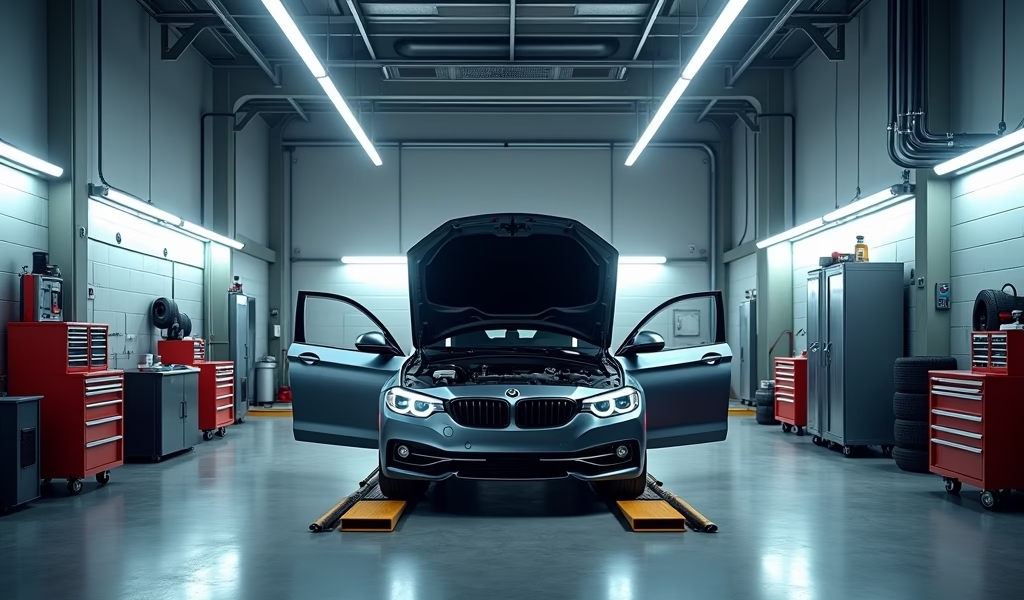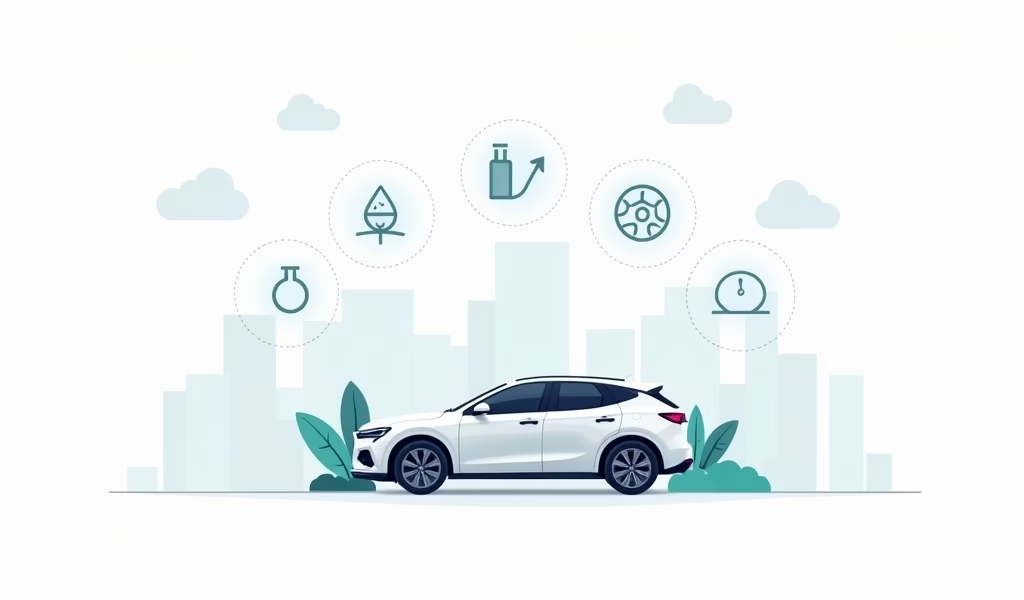Overview
This mechanic’s guide to car buying emphasizes five critical steps: thorough research before shopping, establishing a realistic budget with complete ownership costs in mind, conducting comprehensive pre-purchase inspections, taking extended test drives across various conditions, and approaching negotiations with market data while carefully reviewing all paperwork. The article provides specific strategies for each phase of the car buying process, backed by industry statistics and professional insights to help buyers avoid common pitfalls and make confident, informed decisions.
Table of Contents
- Navigating the Car Purchase Process: A Mechanic’s Guide
- Research and Preparation: The Foundation of Smart Car Buying
- Understanding Budget and Financing Options
- The Critical Pre-Purchase Vehicle Inspection
- Mastering the Test Drive: What to Look For
- Negotiation and Paperwork: Sealing the Deal Right
- Conclusion: Driving Away with Confidence
- Frequently Asked Questions
Navigating the Car Purchase Process: A Mechanic’s Guide
The process of buying a car can feel like navigating a complex maze, especially if you’re not familiar with the mechanical aspects of vehicles. As someone who’s spent over two decades under the hood, I’ve seen countless people drive away in vehicles that weren’t right for them simply because they didn’t know what to look for. According to a recent study by AutoTrader, 52% of car buyers experience some form of regret after their purchase—a statistic we can drastically reduce with proper preparation.
The automotive market is more complex than ever, with the average new car price hitting a record $49,388 in 2023 according to Kelley Blue Book data. Used cars aren’t far behind, with average prices hovering around $26,500. With such significant investments at stake, approaching the process with mechanic-level scrutiny isn’t just helpful—it’s essential.
In this comprehensive guide, I’ll walk you through the five most critical care tips for the car buying process, drawing from both industry data and hands-on experience. Whether you’re looking at purchasing your first vehicle or upgrading to something new, these insights will help you make a decision you’ll be happy with for years to come.
Research and Preparation: The Foundation of Smart Car Buying
Before you ever set foot on a dealership lot, the most important work happens at home. Thorough research is the difference between driving home in your perfect match and settling for a costly compromise. According to a 2023 Cox Automotive study, consumers who spend at least three hours researching online before visiting dealerships report 25% higher satisfaction with their purchases.
Start by identifying your genuine needs versus wants. A surprising 67% of first-time car buyers purchase vehicles with features they rarely or never use, according to J.D. Power. Consider practical aspects first: Will you be commuting long distances? Do you need space for family? Are you frequently driving in difficult weather conditions?
Once you’ve established your requirements, dig into the reliability data for models you’re considering. Resources like Consumer Reports and the National Highway Traffic Safety Administration (NHTSA) provide valuable insights into long-term dependability. For instance, Consumer Reports’ annual reliability surveys analyze data from hundreds of thousands of vehicles to identify common problem areas.
Take time to understand common issues for specific makes and models. As a mechanic, I can tell you that different vehicle brands tend to develop predictable problems at certain mileages. For example, certain European luxury vehicles often develop expensive electronic issues around 60,000-80,000 miles, while some Japanese models might need transmission attention around 100,000 miles.
One often-overlooked research step is investigating the total cost of ownership. According to AAA, the average annual cost to own and operate a new vehicle is approximately $10,728, or $894 per month. This figure includes depreciation, insurance, fuel, maintenance, and repair costs—all factors that vary significantly between models.
Finally, look into expert car buying tips from trusted automotive sources to understand current market conditions. The timing of your purchase can impact pricing significantly, with end-of-month, end-of-quarter, and holiday weekends typically offering better deals.

Understanding Budget and Financing Options
Setting a realistic budget might seem obvious, but it’s where many car buyers make critical mistakes. The Federal Reserve reports that the average auto loan term has stretched to 70.6 months (nearly six years) as buyers try to afford more expensive vehicles—a concerning trend that leads to negative equity and financial strain.
From my experience in the service bay, I’ve seen how an unrealistic car budget creates a cascade of problems. When people stretch too far on their purchase price, they often can’t afford proper maintenance, leading to more expensive repairs down the road. Follow these steps to establish a sound financial foundation:
- Calculate your total monthly transportation budget (ideally 15-20% of take-home pay)
- Factor in insurance costs, which average $2,014 annually according to Bankrate
- Include expected maintenance costs (typically $100-150 monthly for newer vehicles)
- Plan for fuel expenses based on your driving habits and the vehicle’s efficiency
- Calculate registration fees and taxes specific to your location
When it comes to financing, doing your homework before visiting the dealership puts you in a powerful position. According to the Consumer Financial Protection Bureau, borrowers who arrive with pre-approved financing save an average of $1,000 over the life of their loans compared to those who rely solely on dealer financing.
Credit unions often offer interest rates 1-2 percentage points lower than traditional banks. A 2% reduction in interest rate on a $30,000 loan over 60 months translates to approximately $1,600 in savings. Shop around and get pre-approved offers from at least three lenders.
Be wary of focusing solely on monthly payments rather than total purchase price. Dealerships can manipulate payment amounts by extending loan terms, which significantly increases your overall cost. For instance, extending a $30,000 loan from 48 months to 72 months might lower your payment by $200 monthly but cost you $2,500 more in interest over the life of the loan.
Many buyers overlook lease returns as an excellent value proposition. These vehicles are typically 2-3 years old with 30,000-40,000 miles and have been maintained according to manufacturer schedules. According to Edmunds, these vehicles often depreciate 45-55% from their original price while retaining 70-80% of their useful life.
The Critical Pre-Purchase Vehicle Inspection
As a mechanic, I can’t stress enough how important a thorough pre-purchase inspection is—especially for used vehicles. A 2022 survey by CarFax found that 40% of used cars on the market have some form of damage history, yet only 23% of buyers conduct independent inspections. This disconnect leads to expensive surprises down the road.
While dealerships might present a clean vehicle history report, these documents don’t always tell the complete story. A professional inspection typically costs between $100-200 but can save thousands in unexpected repairs. If you’re buying privately, this step is non-negotiable.
When examining a potential used car purchase, pay special attention to these often-overlooked areas:
- Tire condition and even wear (uneven wear patterns indicate alignment or suspension issues)
- Signs of fluid leaks underneath the vehicle
- Battery condition and charging system health
- Suspension components for wear or damage
- Transmission fluid condition (dark or burnt-smelling fluid indicates problems)
- Cooling system integrity (a leading cause of breakdowns)
- Evidence of previous accidents (mismatched paint, uneven panel gaps)
For new vehicles, the inspection process is different but equally important. According to J.D. Power’s Initial Quality Study, new vehicles average 180 problems per 100 vehicles in the first 90 days of ownership. Common issues include paint imperfections, misaligned body panels, and electronic glitches. Carefully examine the vehicle in daylight and test all features before accepting delivery.
If you’re not mechanically inclined, bringing an experienced friend or hiring a professional is money well spent. Mobile inspection services have become increasingly popular, with companies like Lemon Squad offering nationwide pre-purchase inspection services starting around $150.
Don’t hesitate to request service records for used vehicles. Regular maintenance significantly impacts longevity—vehicles that receive regular oil changes and recommended service typically last 200,000+ miles, while neglected vehicles often develop major issues before 150,000 miles according to data from CarMD.
Mastering the Test Drive: What to Look For
The test drive is your opportunity to evaluate how a vehicle performs in real-world conditions, yet the average test drive lasts just 13 minutes according to Autotrader research. This simply isn’t enough time to make an informed decision on a purchase that will impact your daily life for years.
Plan for at least 30-45 minutes behind the wheel and create a route that includes various driving conditions. Highway driving reveals different characteristics than city driving, and bumpy roads expose suspension issues that smooth pavement won’t. According to Car and Driver, testing a vehicle on familiar roads helps you better compare it to your current driving experience.
During your test drive, pay attention to these often-missed mechanical indicators:
- Transmission behavior during shifts (should be smooth and responsive)
- Steering feel (excessive play indicates steering component wear)
- Brake performance and pedal feel (should be firm and progressive)
- Engine performance at various speeds (hesitation may indicate fuel system issues)
- Unusual noises during acceleration, braking, or turning
- Climate control effectiveness (both heating and cooling)
- Suspension response over various road surfaces
Don’t just focus on driving dynamics—evaluate comfort and ergonomics too. According to ergonomics research from the Society of Automotive Engineers, drivers who find their vehicle uncomfortable are 74% more likely to report fatigue on longer drives, which can impact safety. Adjust the seat to your driving position and spend time interacting with the controls.
Technology features deserve thorough testing as well. Infotainment systems are consistently the most problematic area in new vehicles according to J.D. Power’s Vehicle Dependability Study. Pair your phone, test the navigation system, and ensure all features function as expected. These systems are expensive to repair outside of warranty.
If possible, test the vehicle in different lighting conditions. A car that seems perfectly acceptable during daylight might reveal dashboard glare or poor headlight performance at night. According to IIHS research, headlight performance varies dramatically between vehicles, with many popular models receiving poor ratings.

Negotiation and Paperwork: Sealing the Deal Right
The negotiation phase is where many car buyers feel most uncomfortable, but with proper preparation, it doesn’t have to be stressful. According to TrueCar data, the average new car sells for approximately 2-5% below MSRP (excluding limited-production models), while used car prices typically have 5-8% negotiation room depending on market conditions.
Before entering negotiations, research the vehicle’s fair market value using resources like Kelley Blue Book, Edmunds, and NADA Guides. These services analyze millions of transactions to determine appropriate pricing based on condition, location, and features. Coming armed with this data significantly strengthens your position.
When negotiating, focus on the out-the-door price rather than monthly payments. A 2022 Consumer Reports study found that buyers who negotiate the total vehicle price save an average of $3,400 compared to those who focus primarily on monthly payments. Be prepared to walk away if the numbers don’t make sense—emotional attachment to a specific vehicle weakens your negotiating position.
The Finance and Insurance (F&I) office is where dealerships make significant profit through add-on products. According to the National Automobile Dealers Association, the average dealership earns $1,959 in F&I profit per vehicle sold. Common add-ons include:
- Extended warranties (typically marked up 100-200% from dealer cost)
- Gap insurance (available through your regular insurance at 30-50% less)
- Paint protection (often priced at $895-1,295 but costs dealers $150-200)
- Fabric protection (usually $295-695 but achievable with $15 DIY products)
- Nitrogen tire inflation (typically $100-200 for approximately $5 of nitrogen)
While some add-ons provide value, research beforehand which ones make sense for your situation. Extended warranties, for example, may be worthwhile for certain European luxury vehicles known for expensive electronic repairs, but unnecessary for many reliable mainstream models.
Before signing paperwork, take time to read everything thoroughly. A study by AutoCheatSheet found that 31% of car buyers reported unexpected fees or charges after completing their purchase. If something isn’t clear, ask for explanation and don’t proceed until you’re satisfied with the answer.
Check that all verbal promises (like fixing minor issues or including specific accessories) are documented in writing on the purchase agreement. According to the Better Business Bureau, “verbal promises not in writing” is one of the top five complaints against auto dealerships.
Finally, verify that all numbers match what was negotiated and that no additional fees have been added. Common last-minute additions include documentation fees, preparation fees, and advertising fees—some of which may be negotiable depending on your state’s regulations. According to Federal Trade Commission guidelines, all fees must be disclosed before purchase completion.
Conclusion: Driving Away with Confidence
The process of buying a car doesn’t have to be intimidating or result in buyer’s remorse. By approaching your purchase with mechanical insight and careful preparation, you position yourself for a successful outcome and years of satisfaction with your vehicle.
Remember that research is your strongest tool—understanding both the vehicle you’re considering and the market conditions puts you ahead of the average buyer. Take time to thoroughly inspect any potential purchase, test drive it in varied conditions, and verify its condition independently when possible.
Your budget deserves honest evaluation before you begin shopping, not after you’ve fallen in love with a vehicle beyond your means. By calculating the total cost of ownership and securing financing in advance, you make decisions based on financial reality rather than showroom emotion.
The negotiation phase becomes much less stressful when you’re armed with market data and a clear understanding of what constitutes a fair deal. Approaching this stage with confidence and willingness to walk away ensures you won’t be pressured into unfavorable terms.
I’ve seen firsthand how these principles lead to successful vehicle purchases and years of trouble-free ownership. The extra time invested upfront saves not just money, but the frustration and inconvenience of dealing with a vehicle that doesn’t meet your needs or expectations.
Take action today by creating a buying plan based on these guidelines. Start researching models that interest you, establish your budget parameters, and begin gathering information on current market values. The road to your next vehicle begins with these first steps toward becoming an informed, confident buyer.
Frequently Asked Questions
What’s the best time of year to buy a car?
End-of-year (October through December) typically offers the best deals as dealerships clear inventory for new models. Year-end sales targets also make dealers more willing to negotiate.
Should I buy new or used?
Used cars typically offer better financial value as new vehicles depreciate 20-30% in the first year. However, new cars come with full warranties and the latest safety features.
How important is the vehicle history report?
Extremely important—it reveals accidents, title problems, and service history. Always get a CARFAX or AutoCheck report, but remember they don’t catch everything.
Is it better to finance through a dealership or bank?
Getting pre-approved from a bank or credit union gives you leverage during negotiations. Dealers sometimes offer competitive manufacturer-subsidized rates, so compare both options.
How much should I put down on a car purchase?
Aim for at least 20% down to offset initial depreciation and secure better loan terms. This down payment helps you avoid becoming “upside down” on your loan.


Pingback: How to Buy a Car (and What Not to Do) - knowsyourcar.com
Pingback: Walking You Through the Process of Buying a Car: 7 Essential Maintenance Tips - knowsyourcar.com